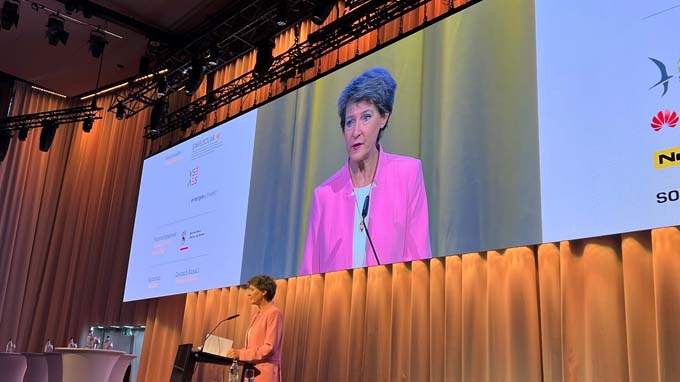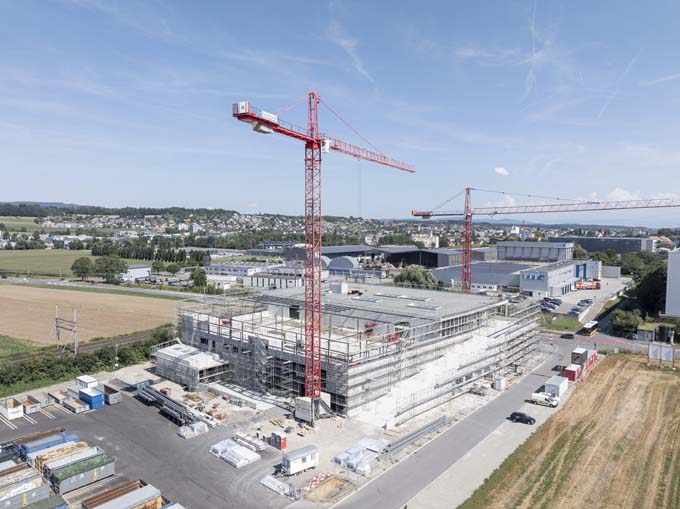Swissolar: Photovoltaics becomes system-relevant
On March 29 and 30, 2022, the 20th Swiss Photovoltaic Conference will take place in Bern, organized by Swissolar in cooperation with the Association of Swiss Electricity Companies (VSE) and the Swiss Federal Office of Energy (SFOE). The dominant theme is the boom of photovoltaics in this country, which has currently become even more urgent.

The Swiss solar industry is booming and has shown in the last two years that it can handle strong growth and that it can advance integration into the power grid with innovative solutions. The call goes out to politicians to quickly remove the remaining hurdles to further growth. Federal Councillor Simonetta Sommaruga said in her opening speech to more than 700 participants: "Never before have so many solar plants been built as now. In the last two years, there has been a record increase in photovoltaics. And the boom will not only continue, it will become even stronger. Because the population wants to get away from oil and gas."
Following the record level of new construction in 2020, further strong market growth was recorded in 2021, which is also continuing in the current year. Fortunately, this applies equally to all market segments, such as single- and multi-family homes, industrial buildings, etc. High energy prices, the desire for energy independence and for a contribution to climate protection, as well as the high demand for electromobility are cited by the Swiss solar industry as market drivers.
200,000 panels in February, half a billion in value added and a new vocational apprenticeship
In February alone, 200,000 solar panels were installed on Swiss roofs. Photovoltaics now cover more than 6 percent of Switzerland's electricity needs. Even just at a steady pace, about 1 percent is added annually. Last year (2021), the added value of photovoltaics in Switzerland amounted to over 700 million Swiss francs (mainly through planning, installation, maintenance and export of machines, tools and components), which flowed directly into the domestic economy - and the trend is rising.
"The Swiss solar industry has a 30 percent increase in orders in 2021," says Swissolar Managing Director David Stickelberger. Today, the Swiss solar industry already comprises around 7000 full-time positions and this number should and is likely to triple in the next 10 years. That's why Swissolar is currently setting up a vocational training course. "More and more young people want to get into this field," says Stickelberger. "We need to give them a solid education." The solar specialist training is scheduled to start in 2024.
Swissolar wants to triple the annual addition of new capacity
In the eyes of Swissolar, the encouraging market growth must continue for the achievement of the climate targets and for the security of electricity supply. By 2030, the annual addition should be 2000 megawatts, three times higher than today. What it will take to achieve this ambitious goal, Swissolar recently outlined in a 11-point program of the Swiss solar industry summarized. The framework conditions that need to be created for this expansion will be the subject of a panel discussion with Daniel Büchel (SFOE), Michael Frank (VSE), Beat Ritler (ResiQ) and National Councilor and Swissolar President Jürg Grossen: "Solar energy is becoming the mainstay of Swiss energy supply. We have the technology, the answers and the solutions - now the hurdles must be removed," said Grossen. With the targeted expansion, solar power will become a key player in the electricity market, which must contribute to security of supply and increasingly be considered in the context of the energy industry, i.e. at grid level and beyond Switzerland's borders. These topics will be the focus of the other presentations on the first day.
Solar installations on roofs and facades remains the main task
Despite the important discussions currently underway on possible Alpine locations for large photovoltaic plants, the focus remains on the solar potential of roofs and facades. On existing buildings and infrastructures alone, more electricity could be generated than we consume today. A particular challenge is often the architectural integration. An entire session on the second day of the event is devoted to this increasingly important topic. Other topics include news from research, in which Switzerland is among the world leaders, and the presentation of current examples of the innovative and practical use of photovoltaics.









